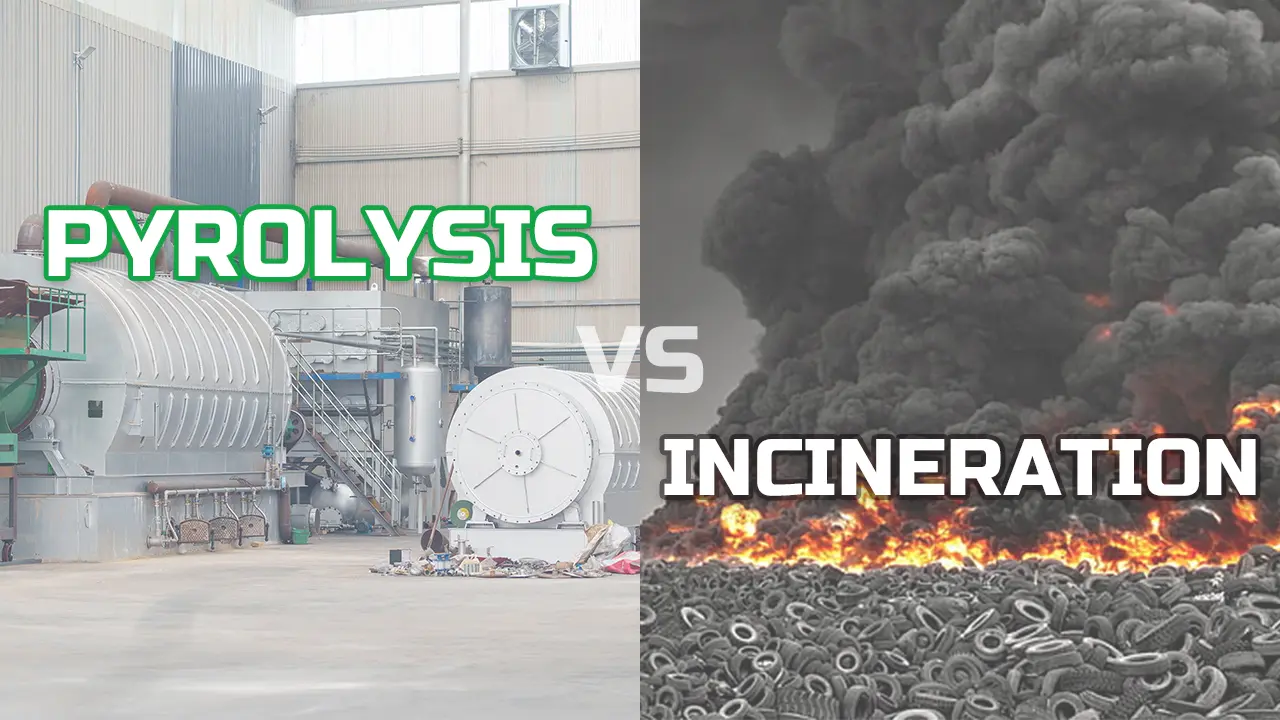
Pyrolysis and incineration are two distinct processes, each with its own characteristics and purposes. Here are the key differences between pyrolysis and incineration:
1. Purpose:
- Pyrolysis: The primary purpose of pyrolysis is to break down organic materials in the absence of oxygen to produce valuable by-products such as oil, gas, and char. It is often used for recycling and converting waste materials into useful resources.
- Incineration: Incineration is a combustion process that involves the controlled burning of waste materials at high temperatures in the presence of oxygen. The primary goal is to reduce the volume of waste and generate heat or electricity.
2. Oxygen Presence:
- Pyrolysis: Operates in the absence of oxygen or in a very low oxygen environment. This prevents complete combustion and results in the production of different by-products.
- Incineration: Requires the presence of oxygen for the combustion process to occur. The waste materials are burned to ashes, and the volume is significantly reduced.
3. By-Products:
- Pyrolysis: Produces valuable by-products such as pyrolysis oil, combustible gas, and carbon black. These by-products can have various industrial applications.
- Incineration: Results in the production of ash, flue gases, and heat. While energy recovery is possible in incineration, the by-products are typically limited to ash and gases.
4. Temperature:
- Pyrolysis: Involves moderate temperatures (typically between 400 to 700 degrees Celsius) to facilitate the thermal decomposition of materials.
- Incineration: Requires higher temperatures (often exceeding 800 degrees Celsius) for the combustion of waste materials.
5. Environmental Impact:
- Pyrolysis: Generally considered more environmentally friendly than incineration, as it avoids complete combustion and can recover valuable resources from waste.
- Incineration: May generate air pollutants and greenhouse gases during the combustion process, contributing to environmental concerns. Advanced incineration technologies, however, include pollution control measures to mitigate these issues.
6. Waste Streams:
- Pyrolysis: Suitable for a variety of organic materials, including biomass, plastics, and rubber.
- Incineration: Typically used for a wide range of waste materials, including municipal solid waste, medical waste, and industrial waste.
In summary, while both pyrolysis and incineration involve the application of heat to waste materials, they differ in terms of purpose, oxygen presence, by-products, temperature, environmental impact, and the types of waste they are suitable for. Pyrolysis is often associated with recycling and resource recovery, while incineration is more focused on waste volume reduction and energy recovery.
